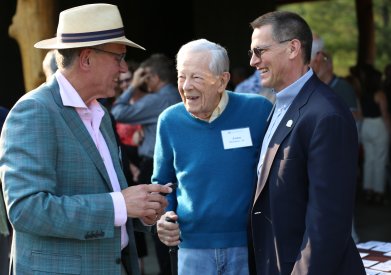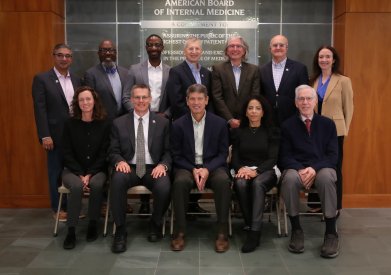Advice for CMMI from Choosing Wisely®
December 14, 2017
Recently, the Center for Medicare and Medicaid Innovation (CMMI) issued a call for suggestions on new ways to design and test market reforms that would be more patient-centered, promote positive clinician engagement and bring authentic value-improvement to health care. As part of this process, they plan to “carefully evaluate how models developed consistent with the new directions can complement what [they] are learning from the existing initiatives.”
The ABIM Foundation has worked for many years to advance medical professionalism as a force for improving quality in health care. Inextricably embedded in that focus has been concern about ensuring positive practice environments for clinicians.
Over the last five years, the ABIM Foundation has learned valuable lessons from our experience engaging dozens of health systems, physician practices, and medical education and training programs with the Choosing Wisely® campaign. We believe many of our lessons learned can help inform the model of change that CMMI is seeking. For example:
- In partnership with Costs of Care, the American College of Physicians and others, we have introduced the concepts of waste and financial “harms” as salient patient-centered considerations in medical education and training programs.
- With the support of the Robert Wood Johnson Foundation, we have engaged health systems, medical societies, statewide quality improvement collaboratives and others to stimulate internalization of the Choosing Wisely campaign and implementation of its recommendations, with outstanding results on targeted and locally selected problems of overuse.
- From the beginning of the campaign, Choosing Wisely has promoted the wise stewardship of health care resources, a key commitment of the Physician Charter, and challenged health care practitioners and medical educators to design their own new approaches based on Choosing Wisely recommendations and value-based principles.
Based on what we have observed in the various ways that grantees and others have chosen to implement Choosing Wisely recommendations, the common elements of successful efforts reflect seven key approaches:
- A “bottom-up” strategy with physicians and staff selecting locally relevant “overuse” improvement opportunities and strategies to address them;
- Patient-centric definitions (e.g., unnecessary “needle sticks” versus unnecessary blood-draws);
- Supportive “intel inside” information systems to track progress and provide feedback;
- Acceptance of imperfect measures as decent indicators
- Emphasis on collapsing variation toward a clinically appropriate mean;
- The addition of a bit of friendly, collegial competition; and
- Non-financial rewards and recognition, including peer recognition, and higher levels of practice autonomy and trust. Focusing, activating, and resourcing physician professionalism has been found to be an excellent recipe for success.
This last approach is key. CMMI’s Transforming Clinical Practices Initiative (TCPI)—and perhaps other CMMI programs—are working to align and leverage the work physicians and health systems are already doing to address overuse through Choosing Wisely. However, TCPI and other physician-level “pay for performance” (P4P) platforms are not ideal mechanisms to cultivate the intrinsic motivation that is the hallmark of medical professionalism and the energy source for the promulgation of the tenets of the campaign. Indeed, P4P systems have, at best, a mixed record of improving quality and outcomes and have been widely cited as being de-motivating and a source of physician burnout.
Many of CMMI’s other innovation models experiment with incentives and risk-sharing arrangements at the organization level, which is appropriate, yet without regard for how quality- and value-improvement processes are implemented “inside” those organizations. In many of these cases, formal physician pay-for-performance systems still persist “under the hood.” Again, our experience suggests that physician incentives should be structured to take advantage of physicians’ intrinsic motivation – the desire to be a healing agent in a trusting and respectful relationship with their patients. Physicians (and their fellow clinicians) know where the “pain points” –obstacles to optimum patient care — are in their systems and practices. When provided with an opportunity to flag and fix those issues that they and their patients butt into, they engage.
Now is an opportunity for CMMI to develop and test a model that can define the minimum preconditions necessary to activate, focus and resource physicians’ intrinsic motivation to support clinical change, as well as include data and support to improve on indicators that are relevant to their local practice. It is our hypothesis that if these other elements are present and reinforced by federal policy, this approach will not only outperform current P4P programs that primarily use financial incentives, it will increase patient and physician well-being as well.
Leslie Tucker
Independent health care consultant working with ABIM Foundation
Daniel Wolfson
EVP & COO, ABIM Foundation


